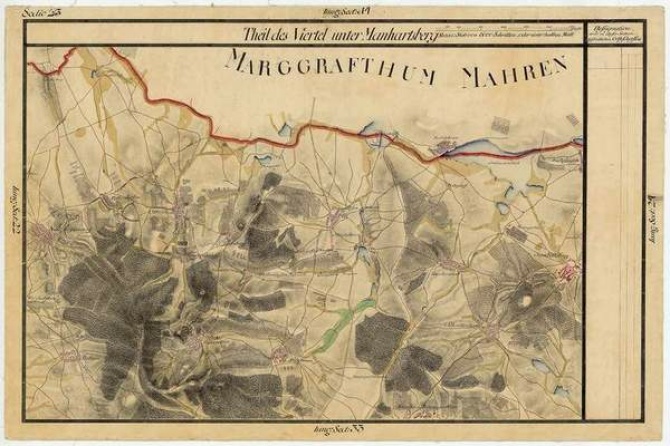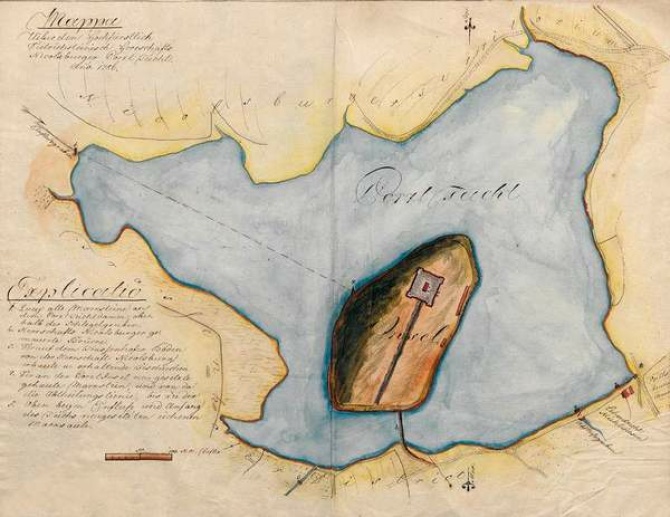
The pond building and fish farming managed by social elites evolved into a phenomenon at the close of the Middle Ages and in the early centuries of the modern times.
From the 15th century onward, the country below the southern slopes of Pálava, “infested with superfluous and stagnant waters”, was gradually transformed, through a system of large and small ponds with fish nurseries, fisheries and water mills, into a colourful variety of waterways and profitable water facilities.
Although the ponds increased the economic value of the originally permanently waterlogged valleys of the brooks, covered with large wet grasslands and pools with rich water-loving vegetation, they irreversibly drained the landscape and radically changed its previous character. The construction of the impressive fishpond system in the area below the Pálava Hills is predominantly owed to the Liechtensteins, a prominent aristocratic family in control of a large part of the area around the lower river Dyje in the late Middle Ages. Six ponds were made in the Včelínek brook valley, of them three belonged to the Mikulov estate (Šibeničník, Portz/Nový and Nesyt ponds) and three to the Lednice estate (Hlohovecký, Prostřední and Mlýnský ponds). In the Mušlov brook valley, seven ponds were gradually built and some of them collected water for the Marian Mill at the northeastern edge of Holy Hill, others were located down in the warm valley, protected by the southern foot of Milovice forest. Later they became disused. The new Mikulov-Lednice fishpond system was comparable in size with that of Třeboň ponds, and the ponds in the Pálava area were even considered the most profitable in the whole of Central Europe throughout centuries, because they were supplied with runoff from the Pálava Hills, containing nutrients rich in lime, and warmed by sunrays of the warm Pannonian climate.

Pond basins, moreover, did not only provide fish, but also the cut reeds, widely used for roof covering or as fuel, and were also the source of ice, an important commodity needed for the preservation of food and beverages in cellars. Ponds also contributed to the climate conditions suitable for vine production. Both large and small pond systems were also the first major water management works, regulating the water power needed for running the mills that were by far the most important industrial plants for the fertile south Moravian land in pre-modern times.
Mills were built from the High Middle Ages onward either right on millraces branching off the main river Dyje basin, or on the ponds supplied from smaller streams, such as Sedlecký mill at the Portz pond dike (Nový pond).
The gradual decline and temporarily even near extinction of the fishpond business in southern Moravia in modern times was due to a great hunger for arable land manifested from the beginning of the 19th century onward and culminating toward its end. The growing population, contemporary agronomic thinking, introduction of the new crops and better methods of arable farming all together led to pond draining and the effort to alterate watercourses.
Of the large basins, only very rich Nesyt pond survived in its completeness, while Portz pond was reduced as a result of the construction of the Břeclav – Znojmo railway line, and restored after 1945.










